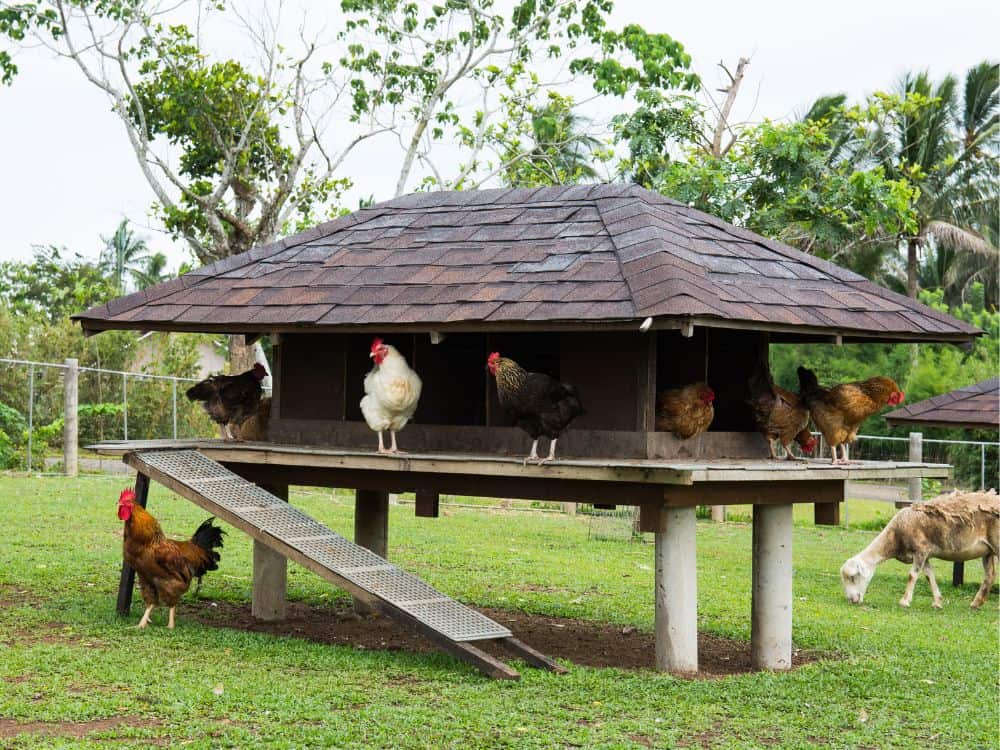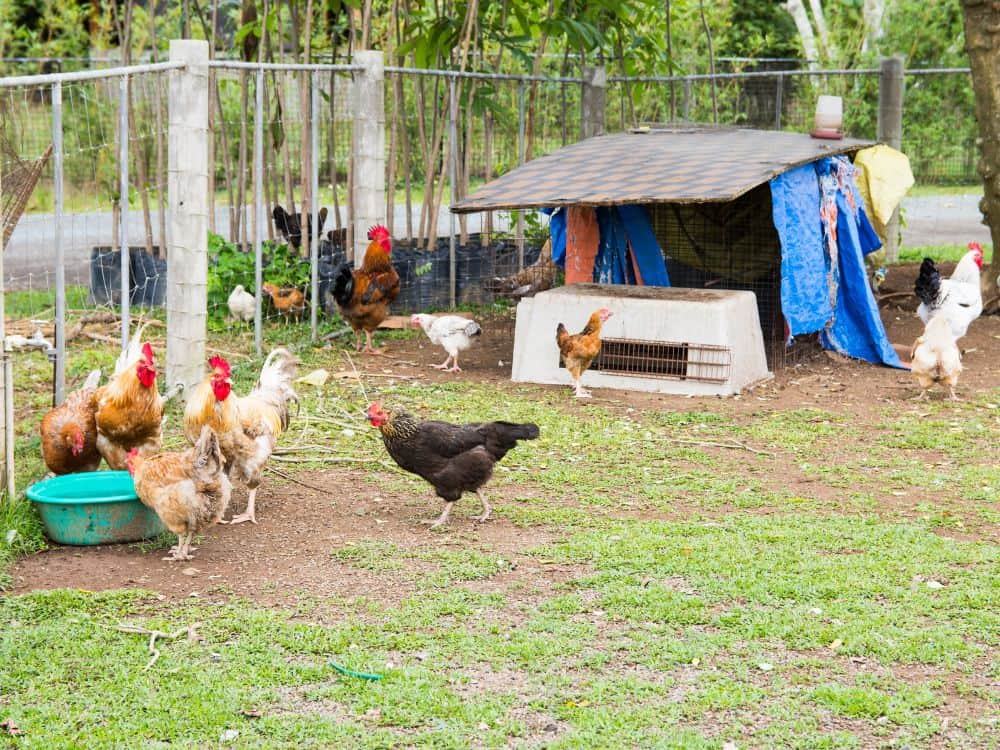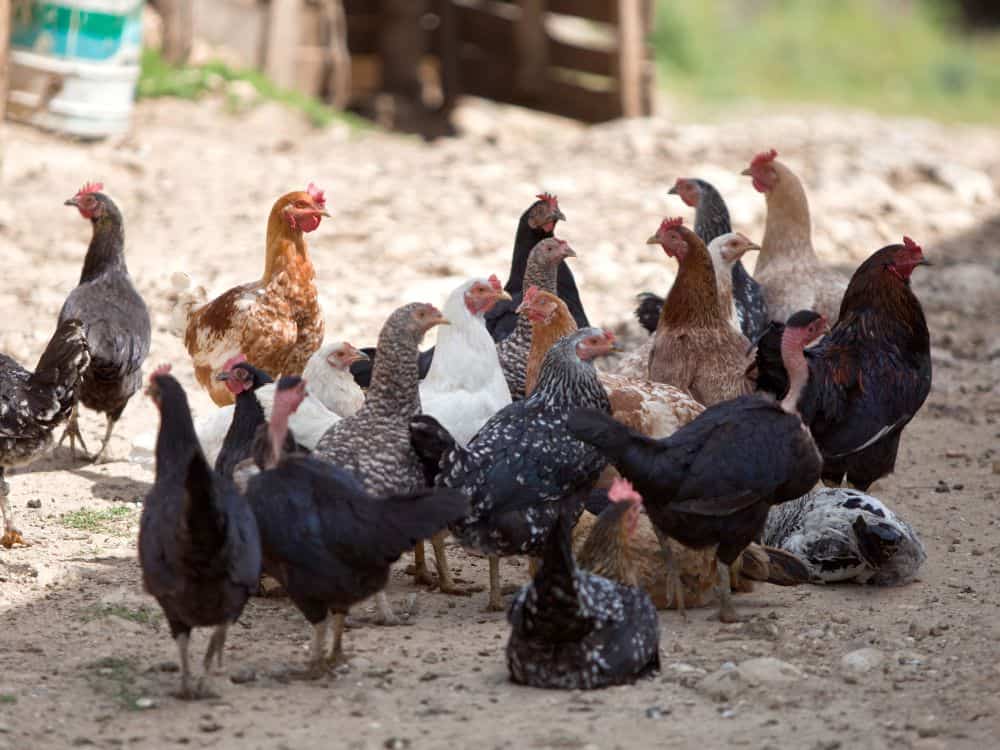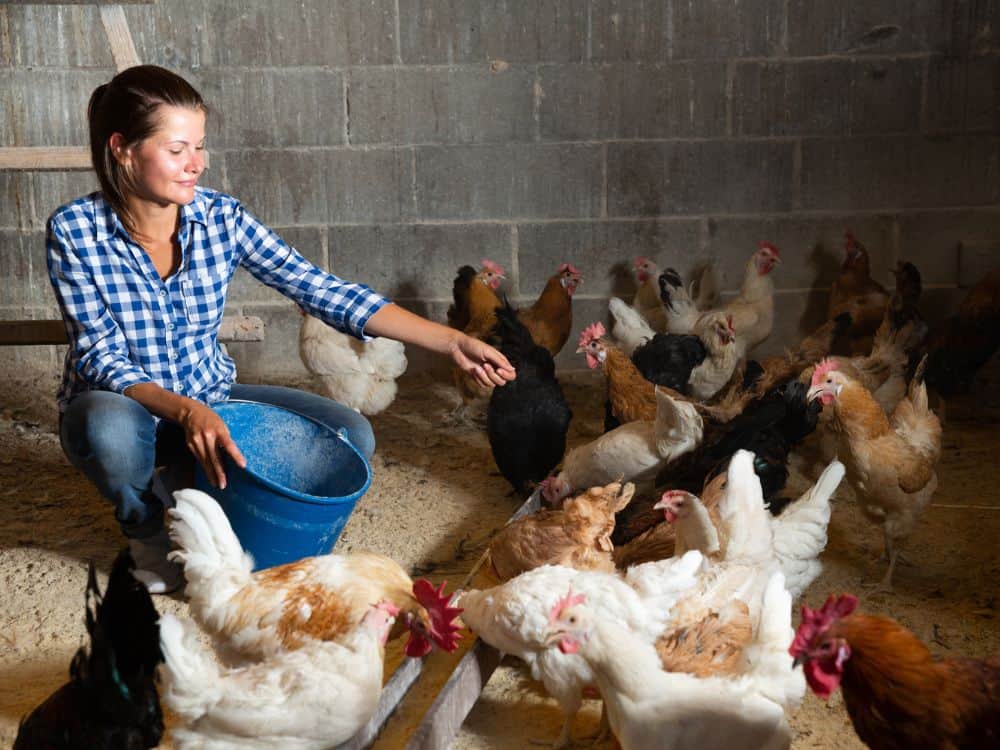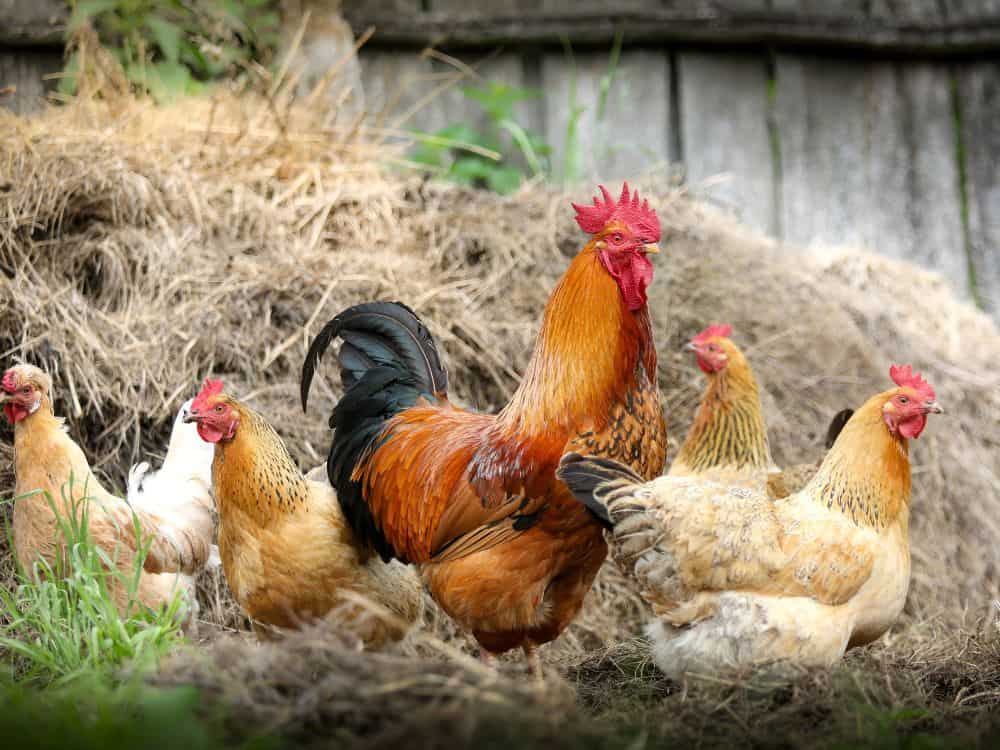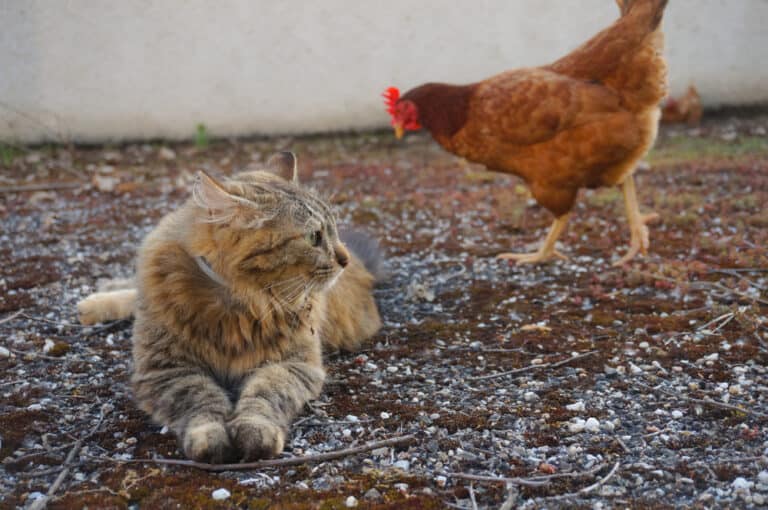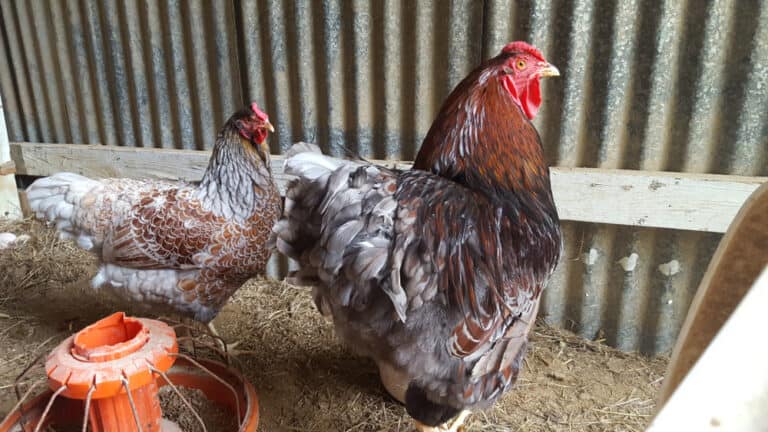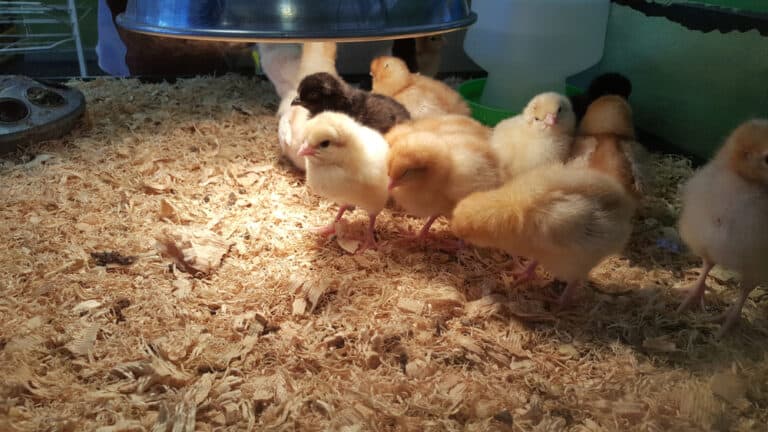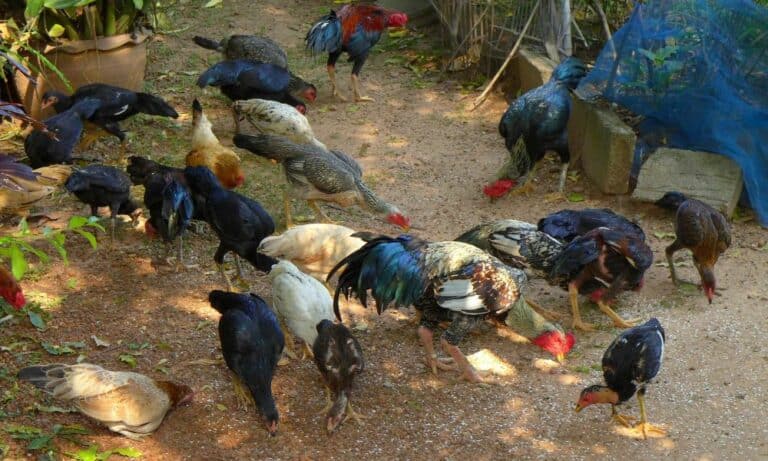Chicken costs can be divided into four categories:
- Shelter: $0 to $3,000+
- Feeders and waterers: $0 to $200+
- The chickens themselves: About $25/point-of-lay hen
- Recurring costs: About $300+ per year
You can keep costs low by using what you have, or you can invest several thousand for a Pinterest-worthy farm. Regardless of what you choose, we do our best to explain every option available and the attached price tag.
Cost of Chicken Shelter (Coop, Run, Fencing, etc.)
Before you can even purchase your chickens, you need a safe place to keep them. This is most easily done with a chicken coop, while the need for a run or new fencing differs depending on your space and preference.
Keep in mind that chicken coops and runs are not the same thing. A chicken coop is a structure that contains nesting boxes and roosts and may be completely shut down at night. A chicken run allows your flock more freedom outside of the coop, fencing off an area for foraging and exploration.
Chicken coops do not need to be very large, and you can easily repurpose another structure or DIY your coop. Check out this coop made from an old plastic playhouse.
You want to make sure you choose or make a coop that will last and protect your chickens from predators. Make sure you buy something slightly larger than your current needs (chicken math is a plague), and opt for heavy-duty hardware cloth and hardwood construction.
Feature to focus on include:
- Predator-proof materials (i.e. hardware cloth over poultry mesh and flooring rather than a bare bottom)
- Nest boxes
- Roosts
Your chicken coop may cost anywhere from $0 (if you can get one for free or have all the materials at hand) to $3,000 or more for a high-quality pre-built option.
You may choose to attach a chicken run to your coop to give your chickens a safe area to run around in. If you’re comfortable allowing your chickens to free-range, you may not need a dedicated run.
Either way, make sure you have proper fencing to keep your chickens in a certain area while keeping predators or stray animals away. If you’re purchasing your supplies brand-new, this may run you about $2.50 to $5.00 per yard of fencing and $7 to $18 per post.
If you’re making a run, make sure you plan one with a cover. Keeping the chickens in one area makes them easy prey for flying predators, and the cover will keep them safe while also providing shade and shelter.
How to Save Money When Sheltering Your Chickens
The best way to save money when sheltering your chickens is to utilize what you already have or can get for free while focusing on high-quality materials and leaving growing room.
A lower price tag may seem attractive, but something made of pine and chicken wire is likely to cost you more money in the long run (as well as your chickens’ lives). In most cases, it’s cheapest to repurpose an existing structure or recycle used materials such as:
- Existing doors, door frames, and window frames
- Plywood
- Fencing
- Timber pallets
- Wooden beams from existing structure
- Exterior paint
- Screws
- Melamine or metal siding
- Leftover roofing
Inspect any free or lowly priced coops with great scrutiny; these are often cheaper coops that failed someone once before, and they may not be worth the hassle of repairs.
You can also repurpose structures such as dog houses, sheds, bird cages, tables, cubbies, playhouses, and more to make your job easier.
Cost of Chicken Feeders and Waterers
Chicken feeders and waterers can cost less than $10, but you’re better off spending a bit more on heavy-duty tools. Many start with cheaper options for their brooders, and then invest in materials to make large-scale automatic systems.
For your feeder, focus on something made of high-quality materials designed to limit food waste. It should be of sufficient capacity to allow your flock access to food at all times.
If you buy a premade automatic feeder, make sure you have enough to prevent the chickens from fighting for their chance to graze. You can also easily DIY one of these feeders with feeder ports and some food-grade buckets. If you want to minimize the floor space you take up, consider some upright PVC gravity feeders.
Avoid chicken waterers made of metal–these will rust pretty quickly. Like the feeder, you can purchase a premade automatic waterer for a small investment, but it’s cheaper to make your own with the right attachments, a bucket, and a bit of your time. For a more hands-off approach, line up water cups that automatically refill on some PVC and connect that to a water source.
How to Save Money on Chicken Feeders and Waterers
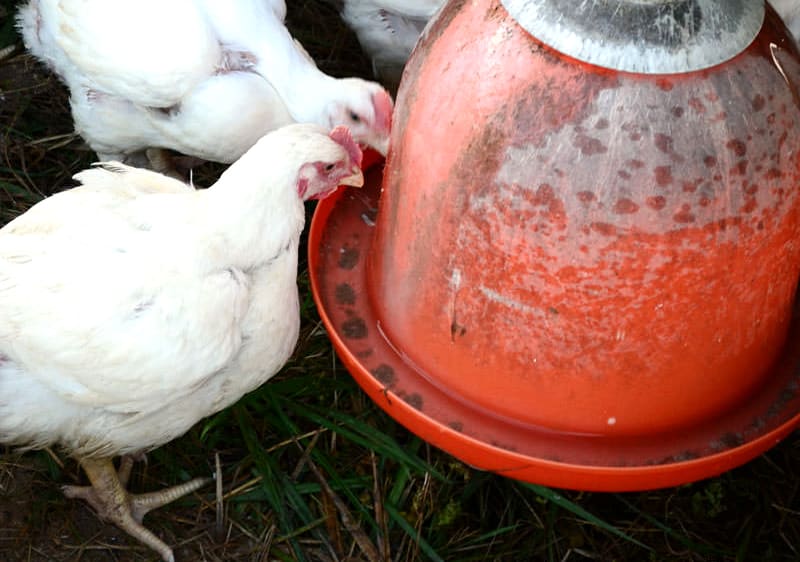
If your budget is tight, it’s possible to start with feeders and waterers from upcycled plastic containers or even free feeding. Keep in mind that doing this requires far more cleaning, and it may negatively impact your flock.
For example, free feeding makes it easier for your backyard chickens to pick up diseases and parasites. This would lead to increased costs from vet bills and medicine as well as decreasing production.
Make sure you’re on top of maintaining your coop and have a plan to invest in a quality feeding and watering system to save the most money in the long run.
Cost of Establishing Your Flock
Unless you’re somehow getting your chickens for free, expect to pay anywhere from $1 for an egg to $70+ for an adult bird.
The amount you spend depends on:
- The age of the chickens you buy
- Whether they’re sexed or not
- The chicken breeds you purchase
There are arguments all across the spectrum, but you should do proper research to determine what the ideal chickens for your backyard flock look like.
Buying Chickens by Age
Generally speaking, the younger a chicken is, the cheaper it will be, regardless of breed.
| Age/Life Stage | Common Breeds | Rare Breeds |
| Egg | $1 to $5+ | $3 to $15+ |
| Day-old/younger chicks | $4 to $35+ | $4 to $50+ |
| Pullets (12 to 16 weeks) | $9 to $30+ | $10 to $40+ |
| Point of Lay hens (around 19 weeks, but depends on the breed) | $30 to $85+ | $40 to $100+ |
| Adults | $0 to $70+ | $25 o $100+ |
Beyond this, you should consider any special purchases you may need to make to support chickens at a certain life stage. For example, eggs will need an incubator and a brooder while point-of-lay hens are ready to move into your coop.
Eggs are also a risky investment. You should only count on half of those hatching, and you will not know the gender of the chicks until they emerge. Still, they’re an interesting project to take on.
Is it Cheaper to Buy Chicks or Adult Chickens?
When you’re just getting started, it’s usually cheaper to buy adult chickens than it is to buy chicks. By investing in layers to start, you can have an immediate return on your investment and a smoother introduction to chicken keeping.
Alternatively, you can purchase pullets to cut costs, minimize the materials needed to raise them, and give yourself plenty of time to tame them before witnessing them in their prime.
Laying hens may also provide you with the eggs you need for replenishing your flock, and you can invest in the incubator and brooder after you’re an established chicken owner.
The exceptions to this are when you’re purchasing a large number of chickens at once, pursuing rare breeds, or already have a plan for the extra chicks or unwanted birds.
Buying Sexed vs. Unsexed Chicks
Autosexing breeds and sex-linked hybrids prevent you from the burden of dealing with extra roosters, but they usually cost more because of the convenience. If you have a plan for dealing with the extra roosters to balance out your flock, you can save money by opting for unsexed chicks.
Recurring Chicken Costs
Recurring costs may differ depending on the scale of your backyard flock, but they operate off the same baseline and within similar categories.
This includes:
- Feeding your chickens
- Providing clean bedding
- Routine care and veterinary costs
It’s also a good idea to plan ahead for emergency vet visits and expenses down the line, as well as miscellaneous expenses such as cleaning supplies.
Feed Costs
Chickens may not seem like they eat a lot, but it adds up. A laying hen consumes about ¼ lbs of layer feed per day (roughly 1.5 lbs per week). A small flock of 5 hens will eat about 7.5 lbs in a week, forcing you to buy a new 40 lbs bag every 6 weeks.
This is assuming you took the plunge and purchased a high-quality, scratch-inhibiting feeder to prevent waste. While $0.75 per pound for organic feed doesn’t seem like a lot, it’s not something you want to just throw in the trash because of a poorly-designed feeder.
Chicken feed is not an area that you can cut costs in. Free-range chickens may not eat as much, and you can provide kitchen scraps and treats as a supplement, but nothing should replace a high-quality chicken feed formulated for their life stage and purpose.
Because of this, it’s often more cost-effective to purchase commercial feed and supplement with what you have available. Make sure you leave enough in your budget for grit and calcium supplements, such as oyster shell, to provide a well-rounded nutrition for your flock.
Bedding Costs
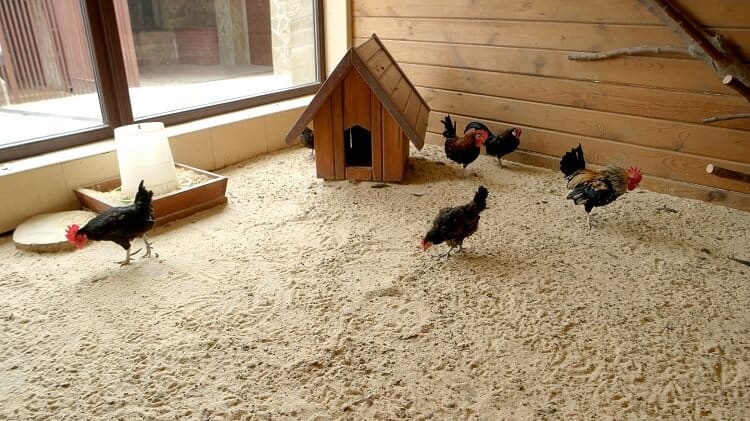
Again, free-range chickens may not need a lot of bedding, but adding it to your coop can keep things clean and increase their comfort, protecting chicken health and increasing egg production.
The most popular bedding options include:
- Straw: provides enrichment chickens can peck through; perfect for brooding boxes; difficult to keep clean and may be difficult to locate in some areas
- Wood shavings (not cedar): economical and readily available; easy to clean out, and high acidity balances out nitrogen in manure
- Hemp: most absorbent and dust-free; much more expensive (although you change it less often) and difficult to locate
- Foraged grass and leaves: economical but risky; should be thoroughly dried first, and anticipate infestations or health issues
Whatever you choose, make sure it works with your desired cleaning schedule as well as the health and happiness of your chickens. The best way to keep costs low is to ensure food and water aren’t contaminating the bedding, attracting infestations and mold.
Routine Care and Veterinary Costs
Routine care for chickens is usually limited to deworming and preventing infestations.
Deworming should occur about twice a year, and you’ll pay about $0.10 to $0.30 per dose (depending on chicken size). This depends on what’s available in your area and what you need to look out for.
You should also take preventative measures to ensure your chickens don’t fall victim to lice, mites, or any other tiny critters looking for a free ride. Choose a chicken-safe pesticide that you’re comfortable with using on and around your flock. Diatomaceous earth is a favorite for many.
Make sure you’re prepared to cover vet bills and medication in case your chickens get sick or injured. This protects your investment and prevents the potential loss of your entire flock, but it’s also the responsibility you signed up for by taking in these chickens.
You should have a humane euthanasia method planned out in case you need to put a chicken out of its misery, as well as the funds to carry out this plan.
Miscellaneous Expenses
If you plan on selling your chickens or their eggs, consider the cost of the materials you may need.
This often includes:
- Tools needed for processing the birds (if selling meat)
- Shipping containers
- Egg cartons (and possibly a cooler)
Other miscellaneous costs revolve around replenishing your flock, cleaning up their environment, handling pests or predators, and making repairs to your coop or fencing.
Conclusion
The initial cost of raising chickens may make you question whether they save you money or not, but they usually pay for themselves in the second or third year. You can make the most out of your investment by:
- Utilizing what you already have
- Opting for high-quality supplies
- Capitalizing off your chickens (i.e. selling extra eggs or chicks; composting old bedding)
If you take the time to plan ahead and ensure you’re investing in what you need, the cost of raising chickens will quickly even out.

